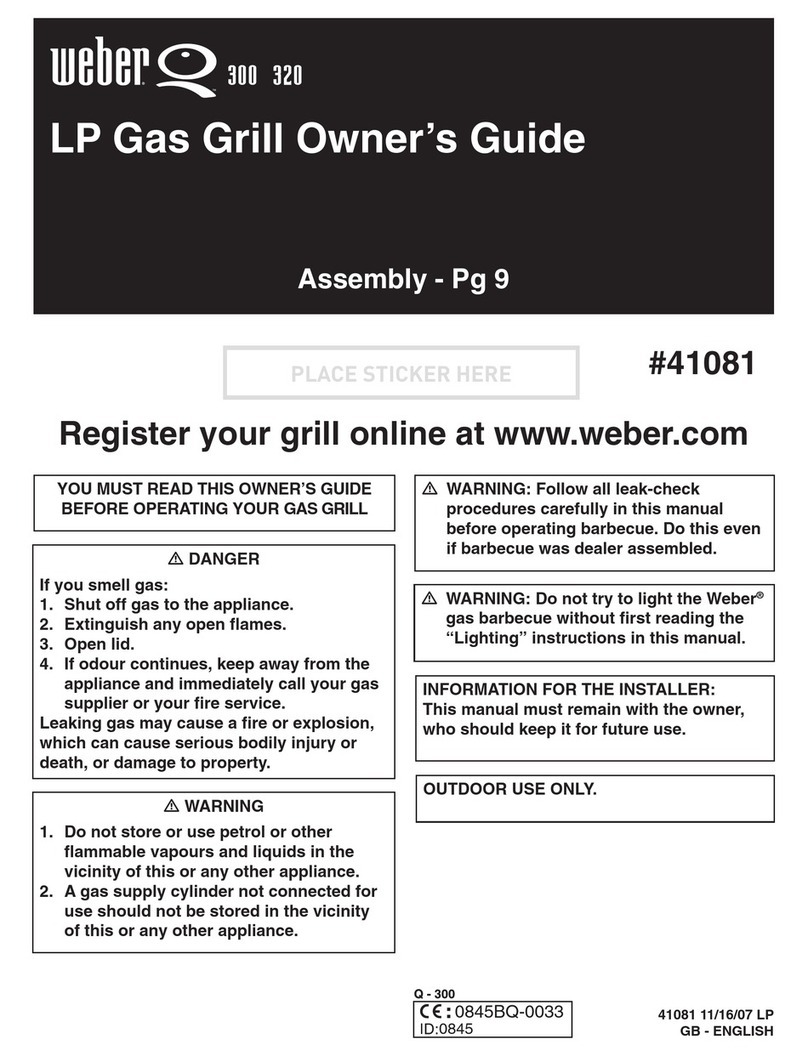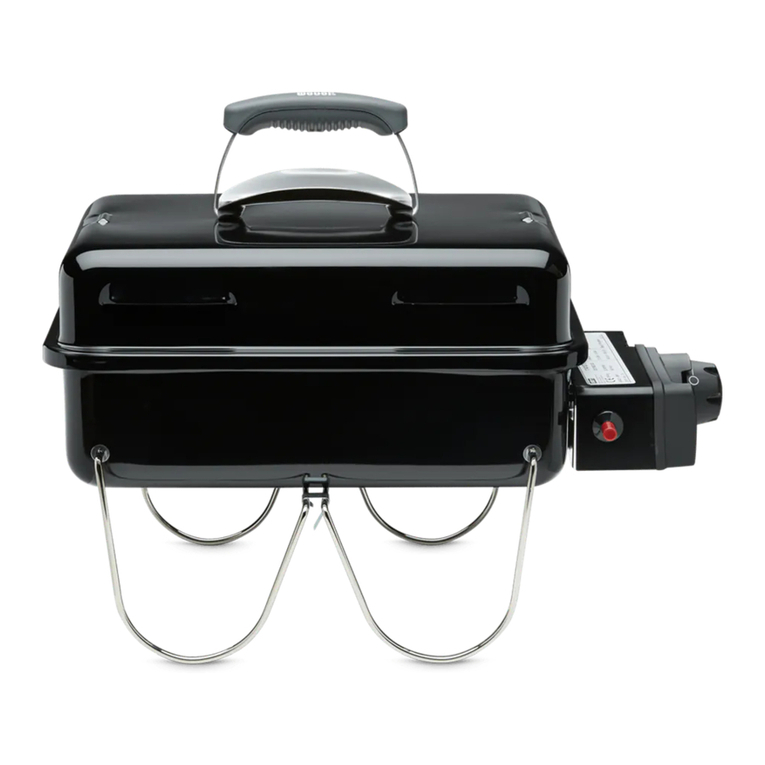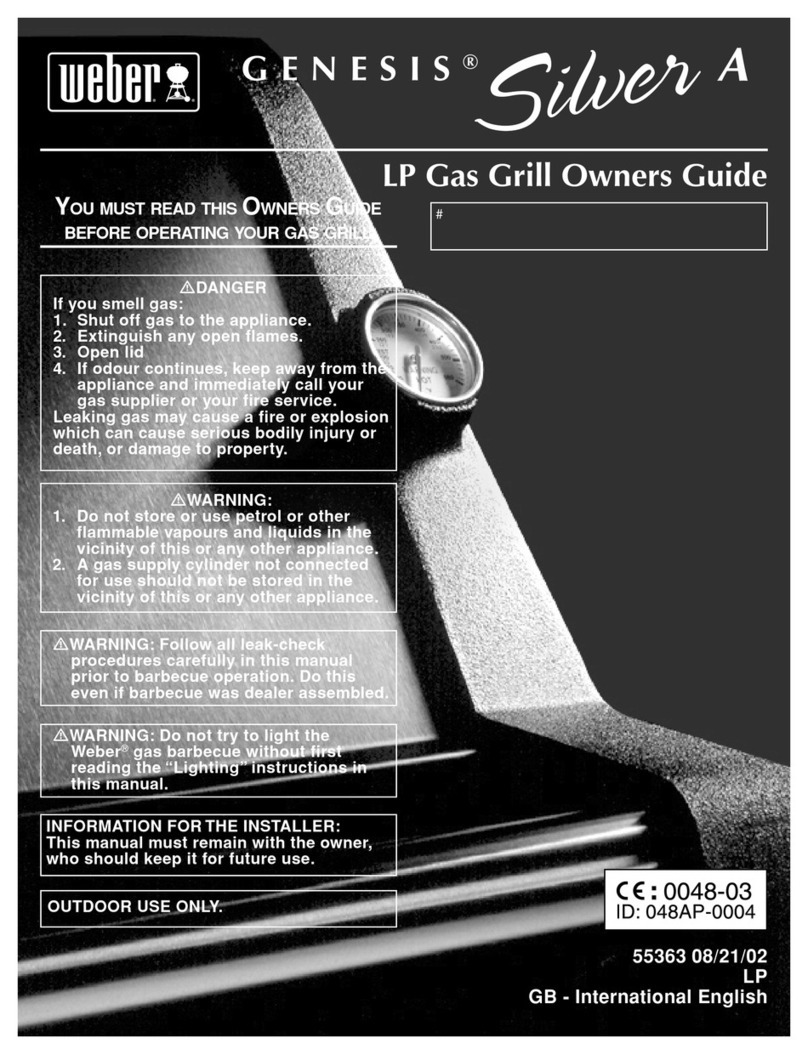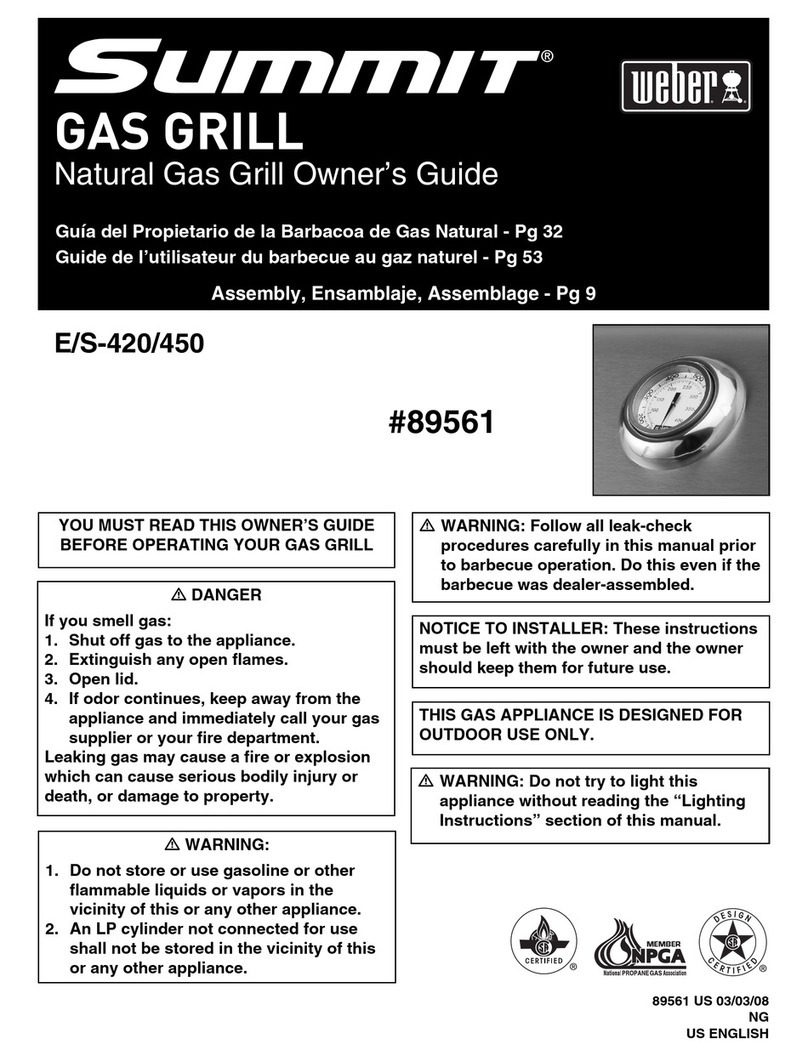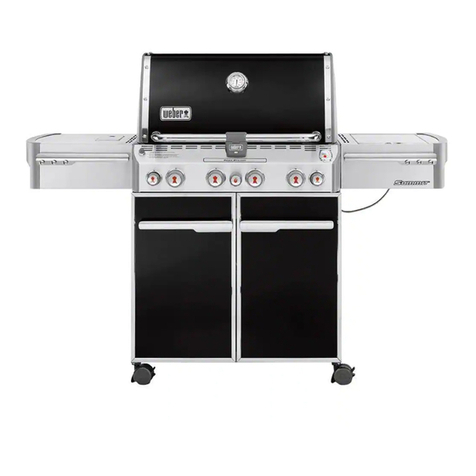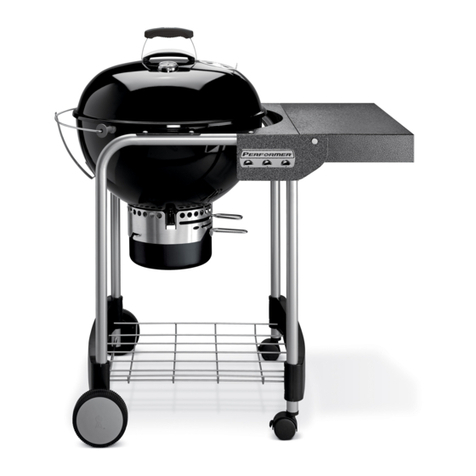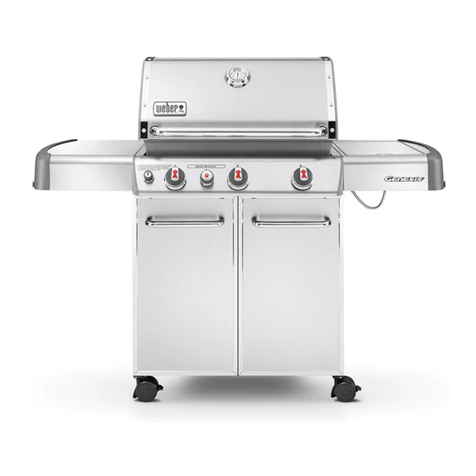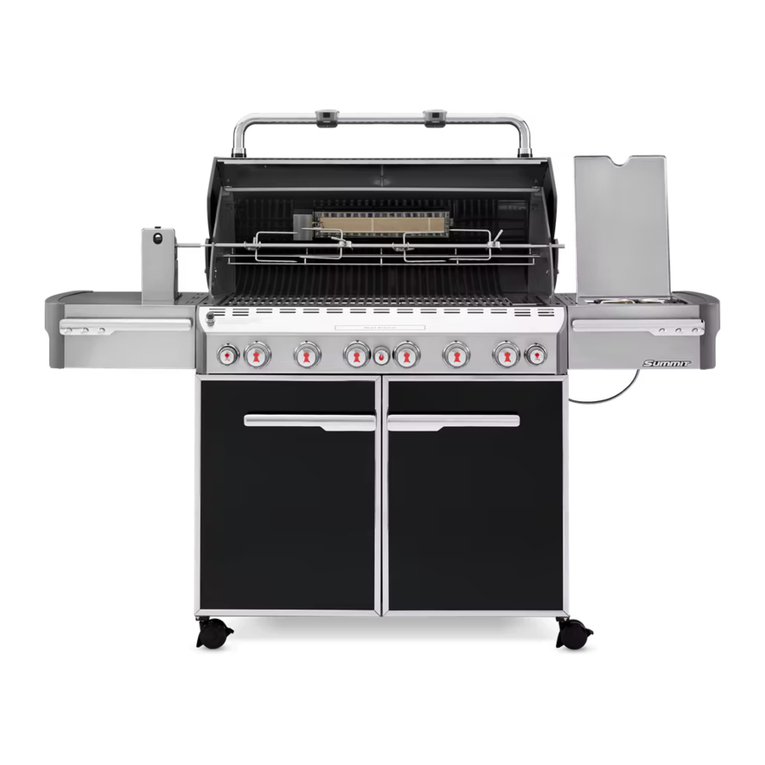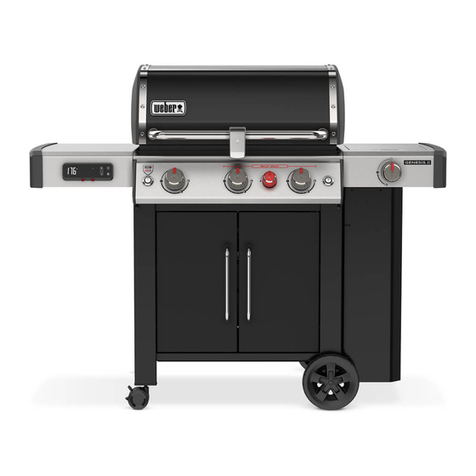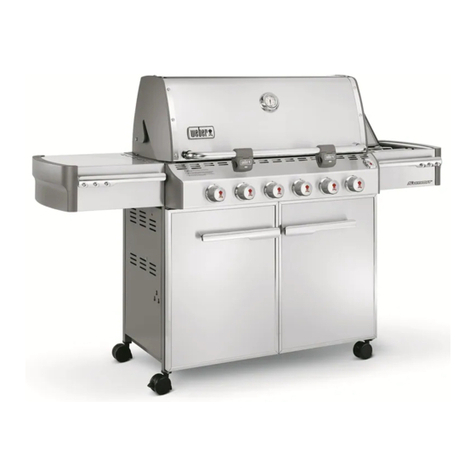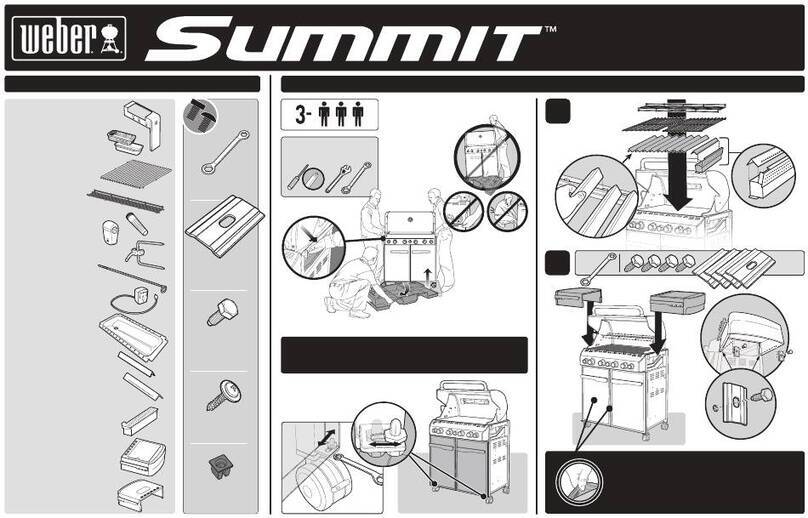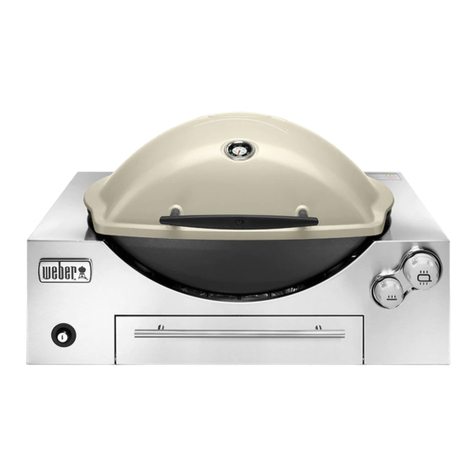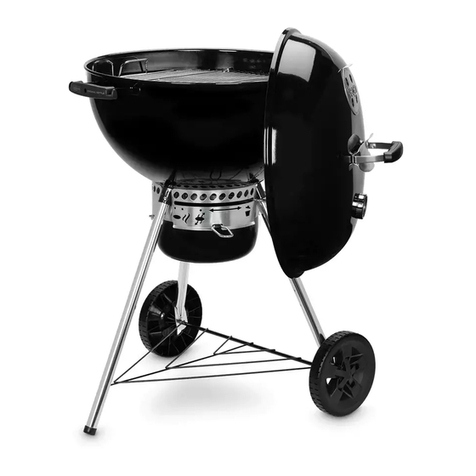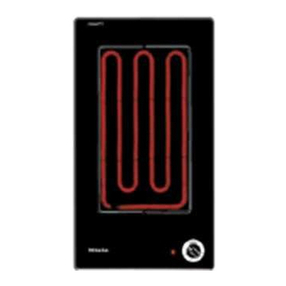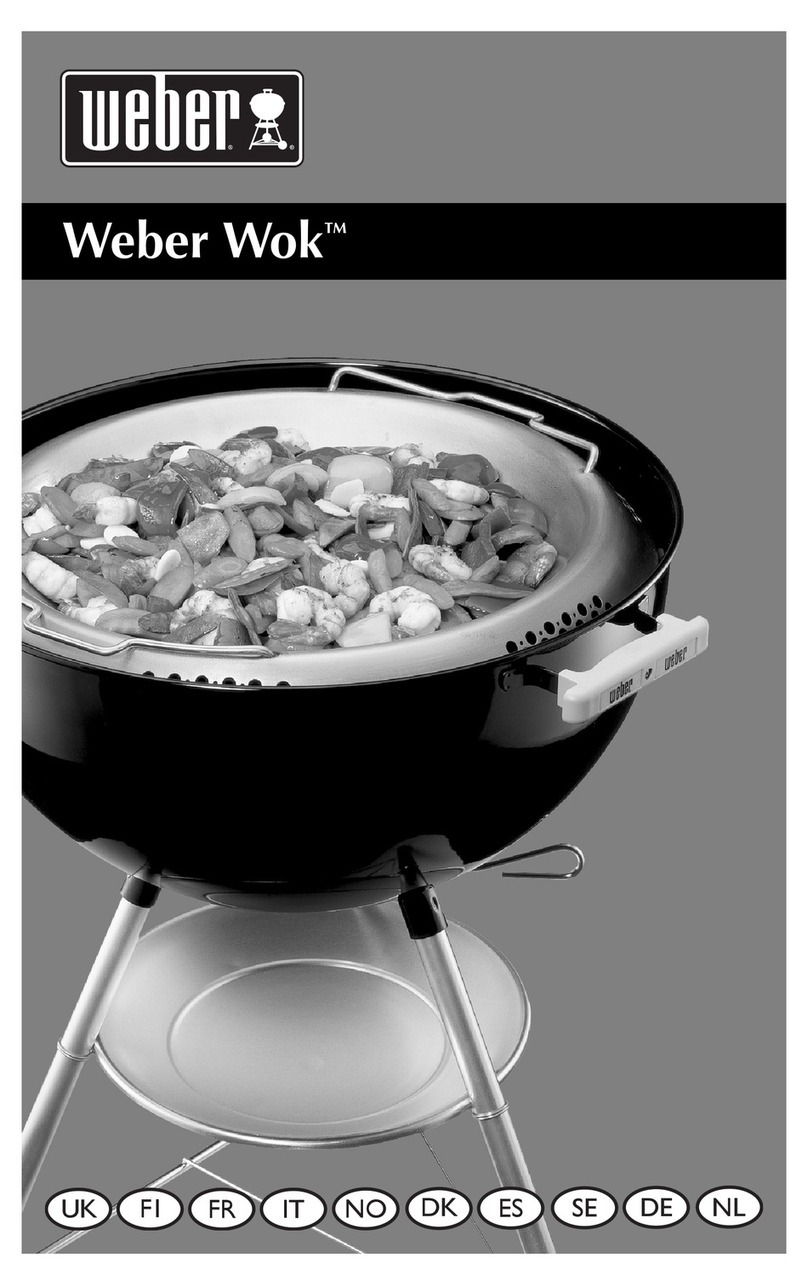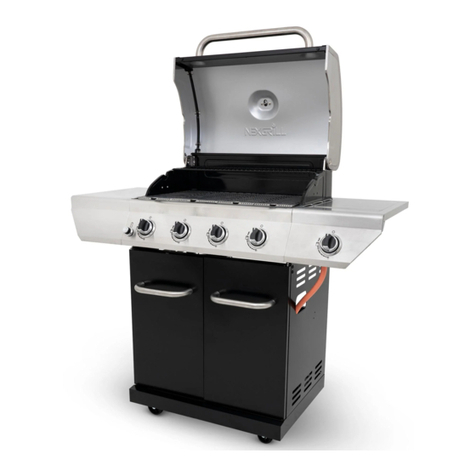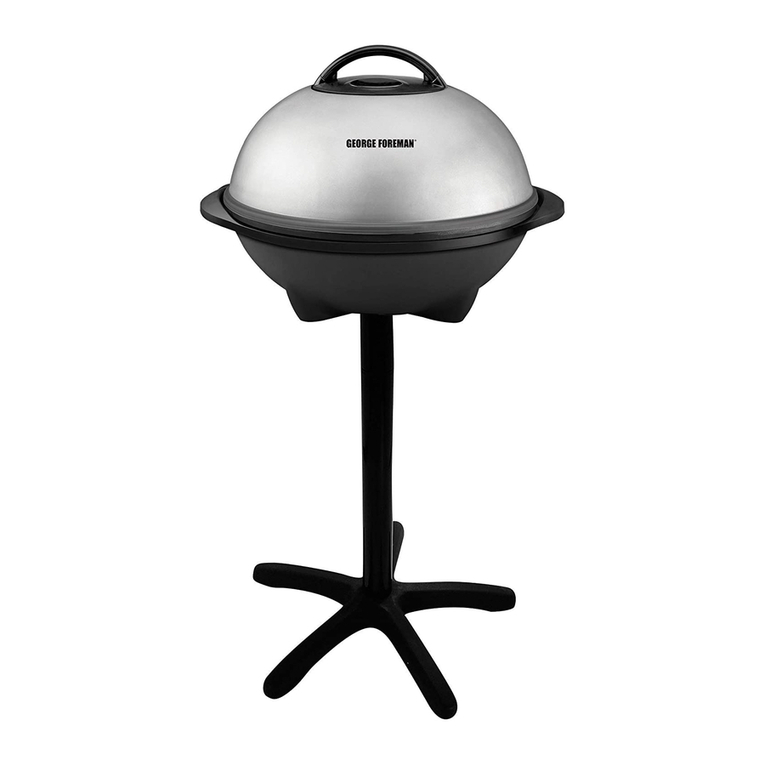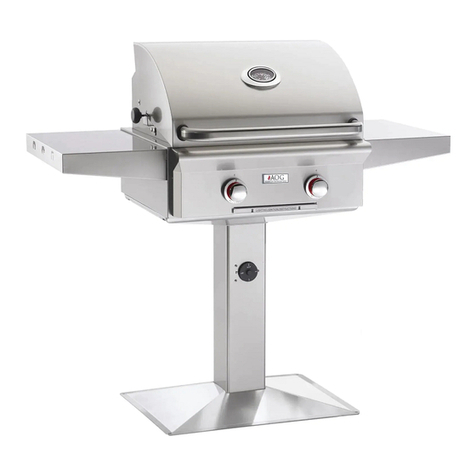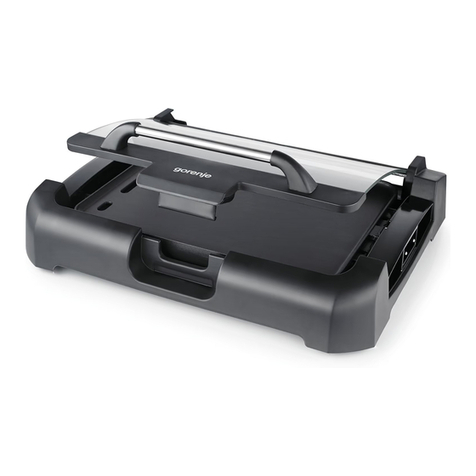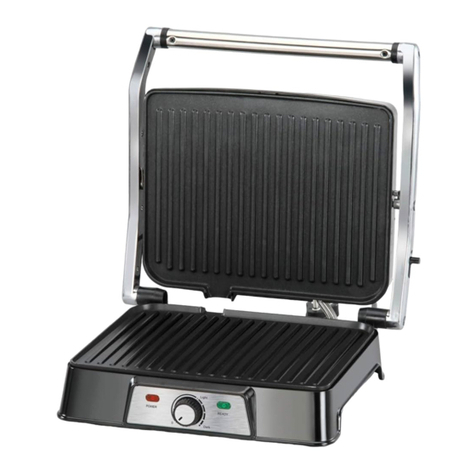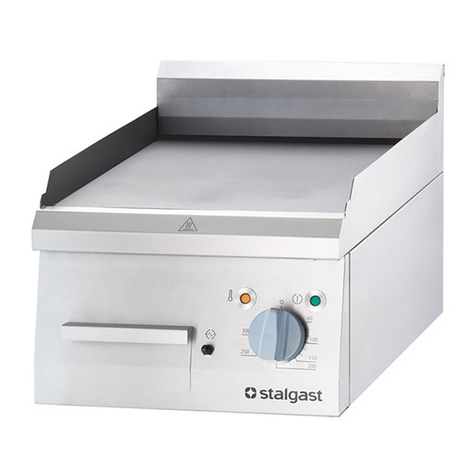
3
Warranty
In order to validate your warranty please register your grill online at www.weber.com
Aluminium Castings, 5 years
Thermoplastic/Thermoset Parts, 5 years Excluding
fading
All Remaining Parts, 2 years
when assembled and
operated in accordance
with the printed
instructions that
accompany it.
Weber-Stephen Products Co. (Weber®) hereby warrants to the ORIGINAL
PURCHASER of this Weber®gas grill that it will be free of defects in material
and workmanship from the date of purchase as follows:
when assembled and operated in accordance with the printed instructions
accompanying it.
Deterioration or damage due to severe weather conditions such as hail,
hurricanes, earthquakes or tornadoes, discoloration due to exposure to
chemicals either directly or in the atmosphere, is not covered by this Limited
Warranty.
There are no other express warrants except as set forth herein and any
applicable implied warranties of merchantability and fitness are limited in
duration to the period of coverage of this express written Limited Warranty.
Some regions do not allow limitation on how long an implied warranty lasts,
so this limitation may not apply to you.
Weber®is not liable for any special, indirect or consequential damages.
Some regions do not allow the exclusion or limitation of incidental or
consequential damages, so this limitation or exclusion may not apply to you.
Weber®does not authorize any person or company to assume for it any other
obligation or liability in connection with the sale, installation, use, removal,
return, or replacement of its equipment; and no such representations are
binding on Weber®.
This Warranty applies only to products sold at retail.
WEBER-STEPHEN PRODUCTS CO.
R. McDonald Co. PTY.LTD.
A.C.N., 007 905 384
104 South Terrace
Adelaide, SA 5000
61.8.8221.6111
www.weber.com®
Weber may require reasonable proof of your date of purchase.
THEREFORE, YOU SHOULD RETAIN YOUR SALES SLIP OR INVOICE.
This Limited Warranty shall be limited to the repair or replacement of parts
that prove defective under normal use and service and which on examination
shall indicate, to Weber®’s satisfaction, they are defective. Before returning
any parts, contact the Customer service representative in your region using
the contact information sheet provided with your manual. If Weber®confirms
the defect and approves the claim, Weber®will elect to replace such parts
without charge. If you are required to return defective parts, transportation
charges must be prepaid. Weber®will return parts to the purchaser, freight or
postage prepaid.
This Limited Warranty does not cover any failures or operating difficulties due
to accident, abuse, misuse, alteration, misapplication, vandalism, improper
installation or improper maintenance or service, or failure to perform normal
and routine maintenance, including but not limited to damage caused by
insects within the burner tubes, as set out in this owner’s manual.
• The minimum cylinder capacity for this barbeque is 9 Kg
Gas Connection Back
Side of barbecue
Height Lid Closed
356.3 mm
111.13 cm
896 cm
An LPG tank that is taller will not fit on the cart
and needs to be set upright in a stable position
on the ground.
Max. Height:
470 mm
